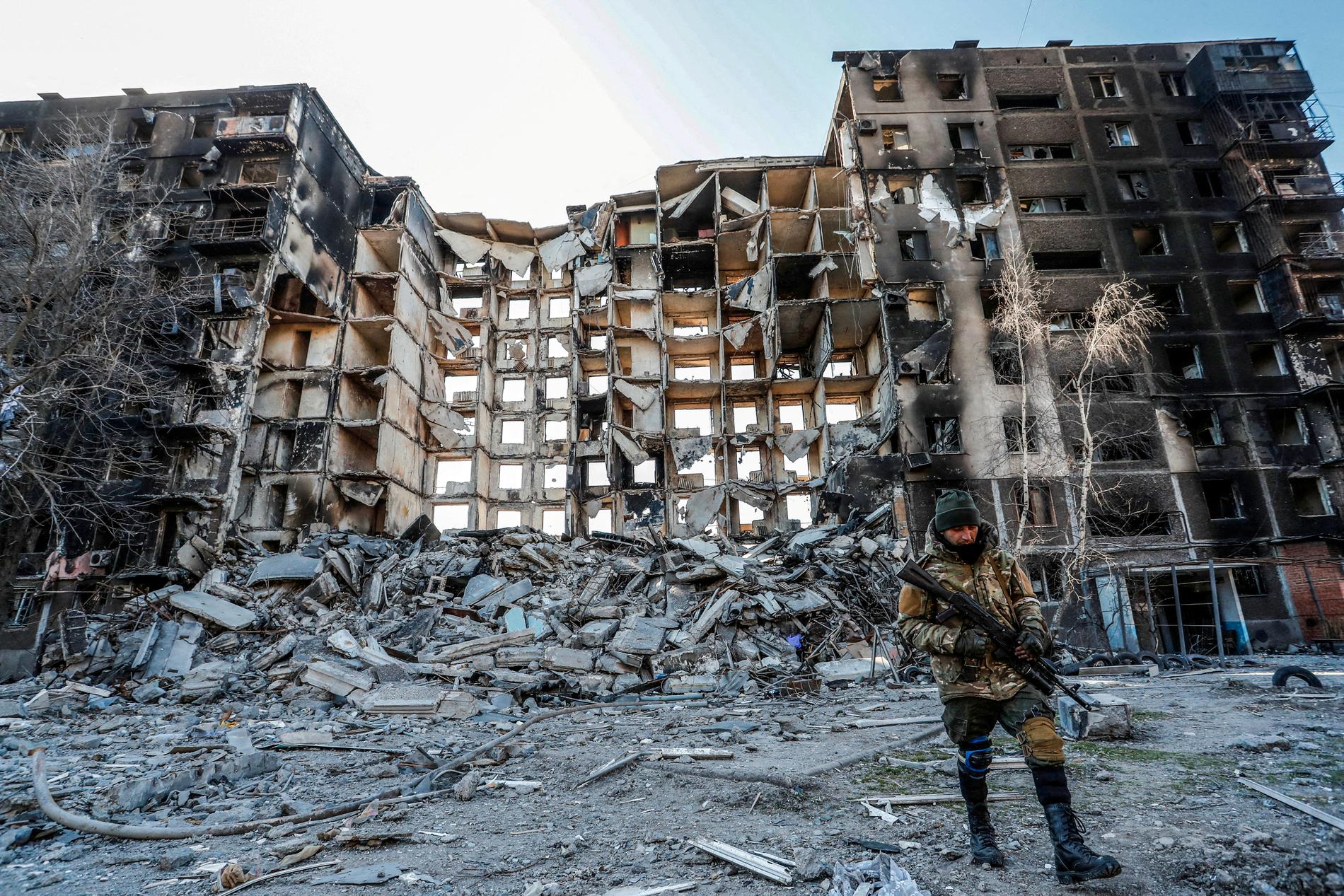SØRREISA / OSLO (VG) The Danish defense expert Claus Mathiesen believes that the NATO countries have an idea of what it takes to step up efforts for Ukraine. Prime Minister Jonas Gahr Støre says NATO has “freedom of action”.
–
The war in Ukraine still ravaging over a month after Russia invaded the neighboring country.
NATO and Norway have been clear that they will not be directly involved in order to avoid an upscaling to World War III. This has also led to a debate whether one should set a limit – a so-called red line – for what western countries can allow, and what goes too far.
When VG asks Prime Minister Jonas Gahr Støre what he thinks about such a line, he refers to the experience from Syria, where the United States drew a red line using poison gas, but ended up not reacting.
He also points to the statement from the 30 member states following last week’s NATO summit, which warned Putin against using chemical and biological weapons.
– What we said clearly was that the use of such weapons will be totally unacceptable and have very serious consequences. Then someone will ask the question “what does it mean”, and it may well hang there as an uncertainty that everyone should think carefully about. It also gives a freedom of action in relation to how to react.
– So there may be something that is too far without putting a red line?
– It is absolutely right.
– They’re floating
Claus Mathiesen is an associate professor at the Defense Academy in Denmark, a former defense attaché in Ukraine and one of Denmark’s most used experts on the Ukraine war.
He does not think NATO will intervene directly in Ukraine now, but will also not completely rule out that they can do so at some point.
– I think there are some red lines. Because there is a point where you can no longer sit and watch. But I think they are fluent, and whether it is wise to say what they are to Russia is a good question. In any case, if you choose to draw a red line, you must be one hundred percent sure that you can do what you say if it is violated, says Mathiesen.
At the same time, both the NATO leadership and the governments of the NATO countries have been crystal clear that they will not intervene militarily because there is a risk of upscaling.
Mathiesen thinks it is unlikely that this will change now. But he also believes the clear position that it is inappropriate to get involved is on the move.
– Now the war has been going on for over a month, and of course it changes a bit about these things, he says, and refers to the difficult ones negotiations, and that Russia has taken in use more bombing and old methods after they have been pushed to the ground.
– Russia is far from being able to force Ukraine to be neutral, which in my eyes is absolutely central to the war for Russia.
Civil loss
The Danish defense expert, like Støre, shows NATO’s red line in Syria. He thinks it is wise for NATO not to communicate what any red lines are, but he thinks they exist.
It may have to do with the use of nuclear weapons or chemical weapons, Mathiesen believes.
– There is of course also another type of red line, even if it is not clearly formulated. It goes on the civilian losses. If Russia were to start protecting refugee columns, or executing those they believe were opposed to these territories being Russian territories, then it would begin to look like something that somehow has the character of what must be a red line for the West. Many things can happen in this war, says Mathiesen.
In Norway, researcher Ståle Ulriksen has argued that there is also a great risk for NATO in so clearly stating that it should not be involved in the war anyway, because it sends a signal to Russia.
Mathiesen says that he acknowledges this dilemma.
But he thinks the most obvious thing for NATO to do more is to send more long-range air defenses that can defend from the bombers. Flying is also an option, but it can be a bigger risk, he says.
He does not believe that the West could intervene militarily in a limited way that would not necessarily lead to a geographical expansion of the war.
– I do not think that for the Russians it will make any difference if we go into Russia and fight with Ukraine or if we fight with Russian forces in Ukraine. Of course, there is a difference in degree, but it can be a matter of time before one would have to attack inside Russia and come to a more violent escalation, says Mathiesen.
Nevertheless, he believes that NATO can do more than before. At the last summit in Brussels on Thursday, so the 30 allies that they would help with more – without being specific about what kind of assistance is in question, he points out.
– It has not been hidden that they have delivered and are delivering armor and air defense weapons mostly of a defensive nature. Then you say that you also do something that goes beyond what you have officially announced, a form of assistance. It is a bit in the words here that there is something more you actually do, but which you do not want to say, he thinks.
–


